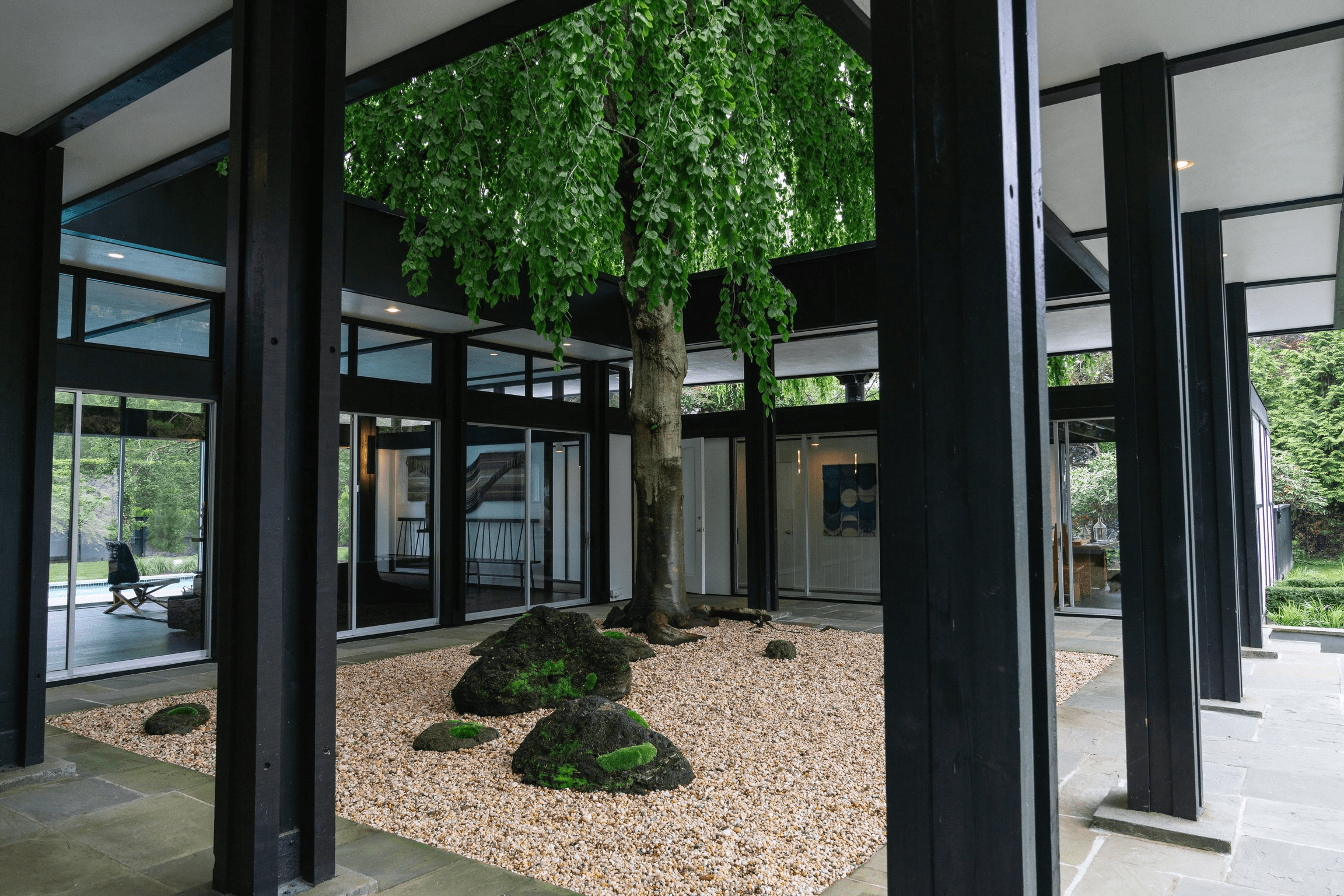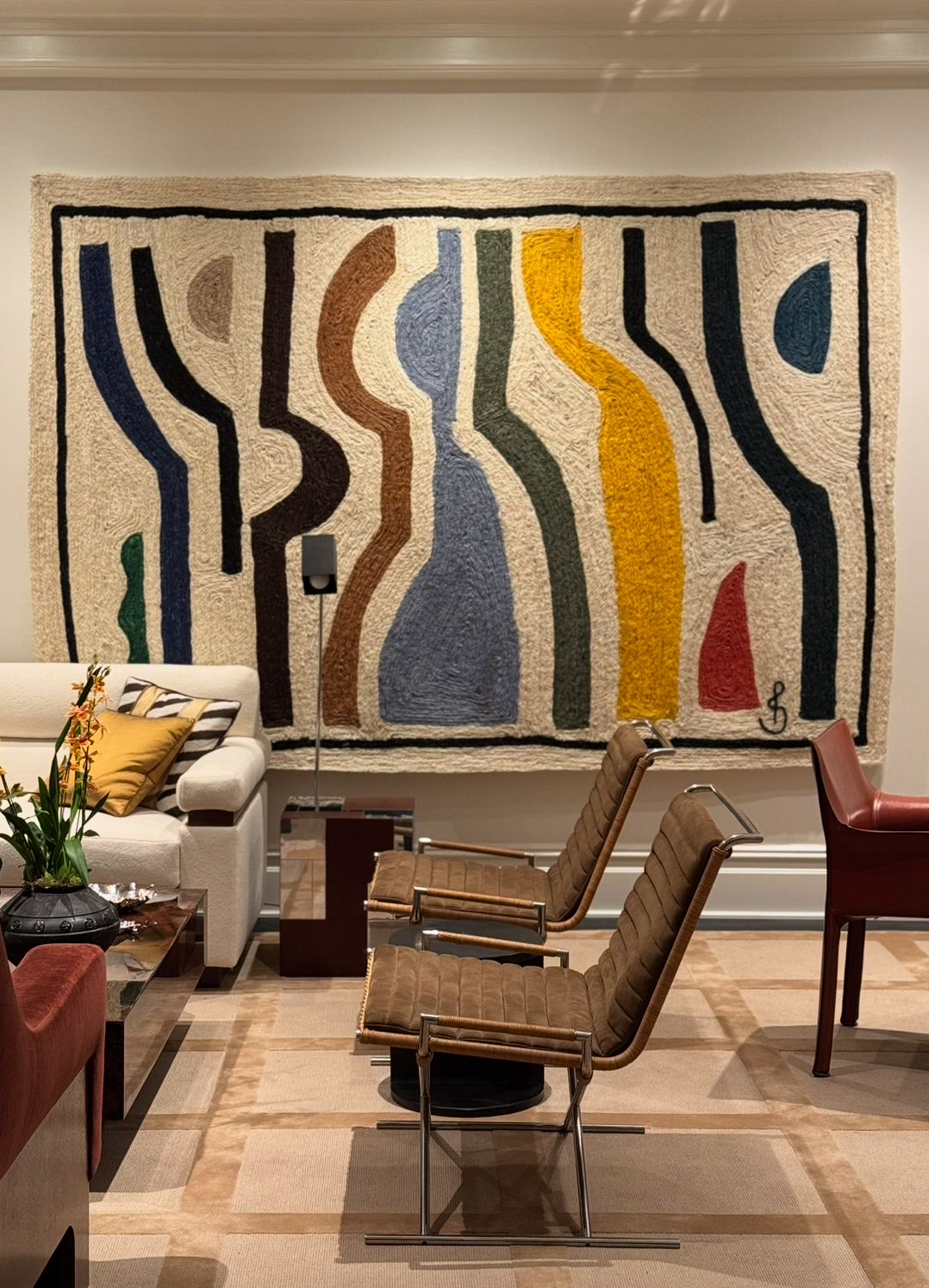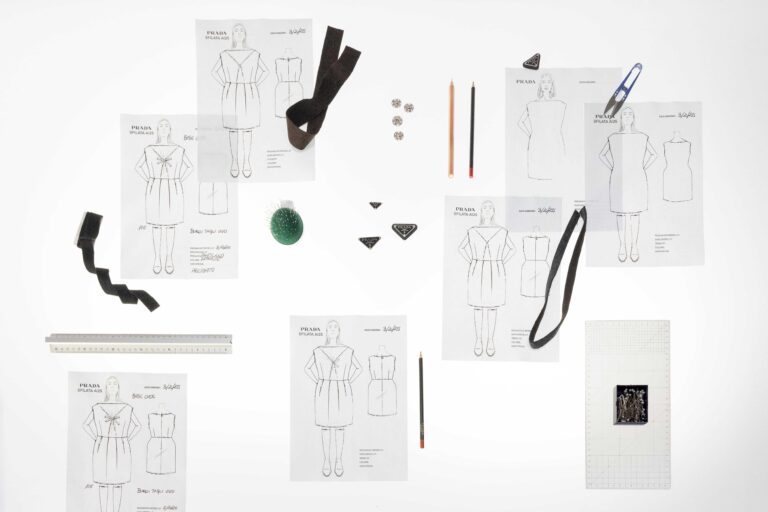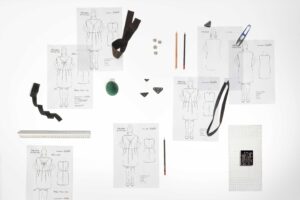
Patricia Udell has spent decades coaxing modernist shapes out of clay, plaster, wood, and canvas. In the process, she has quietly built a reputation for crisp, abstract forms that dance between architectural discipline and graphic play. Her diverse pursuits have been exhibited at regional galleries including Meislin Projects in New York, Quogue Gallery in the Hamptons, and amArtHouse in Connecticut. This summer, at East Hampton’s Onna House, Udell is charting a new course and channeling her vision into an entirely new medium: tapestry.
Her first woven work will be revealed to the public in the aptly titled show “My Life Has Been a Tapestry,” opening tomorrow and on view through Sept. 1, which takes its name from the 1971 Carole King song. Founded by designer Lisa Perry and dedicated to the work of women artists, Onna House is a fitting venue for Udell, whose work often revels in the power of the feminine.
Ahead of the show’s opening, CULTURED sat down with the artist to unpack her move into textiles, the meditative process of solitary creation, and how making art outside the blue-chip glare can offer covetous freedom.
What were some of your inspirations in crafting this piece?
I’ve always loved the Calder tapestries and Matisse. I grew up in New York, and my mother had a great eye. My first favorite painting was Andrew Wyeth’s Christina’s World. I love Matisse’s “The Back Series” as well. We would go to museums a lot—I love the Museum of Modern Art, the Whitney, and the Frick.
I’ve also made a lot of furniture, and for this show, I was inspired by all the forms I’ve always liked. I’ve done painting, which is flat, and most of what I do is gouache on paper, and then it has to have glass over it because it’s fragile. I’ve done a bunch of oil on found-wood pieces that are more figurative. But I’ve been searching for something that wouldn’t be an “under glass” type of thing. So in that way, I’m very proud of this tapestry.
Are there certain stories you’re trying to visualize through this work?
I want it to be simple, happy, and lively across the board—not elitist. I don’t want it to be scary, where someone might say, “What are you trying to do here?” It’s just shapes and colors that I put together. You can meet people at any level.
I always think of an [artwork] as a family of sorts. You always have one kid or family member who’s hard. My sister always says, “Why do you have to put in those ugly ochre colors?” I tell her that if I didn’t, the work might just become an Easter egg parade. You need some discord.

Your process feels quite solitary and intuitive. How does independence play a role in your practice?
It’s all alone. People ask, “Do you have a lot of artist friends?” I do, but I always find people’s take on your work can be a kiss of death. Either they tell you they love it, and that’s sort of staggering, or they give you ideas, and that doesn’t help either. At this point in my career, I need to stay on my own path and not get confused.
Onna House has a distinct design language. Did its space shape your palette or your approach to scale with this work?
I could live there. It’s such a beautiful space. Lisa has a great eye—I’m so impressed with how she gets things done. She makes decisions in one second. She comes into your studio, she loves it, and it’s done. It’s so clear. She’s empowered so many underrepresented, undiscovered female artists and given them a place to show.
How do you hope guests will respond to the work? Where would you like it to live after the show?
I just hope it makes them happy. You know, there are so many overblown houses out East. I’d love to see this type of work in a double-wide entryway, instead of people going blue-chip. I’d just like them to enjoy it and not think so much about what everyone else has got. That gets a little boring.










 in your life?
in your life?

